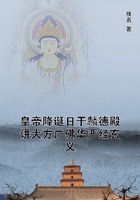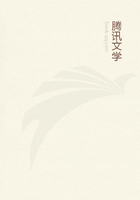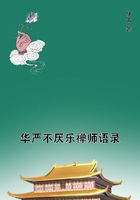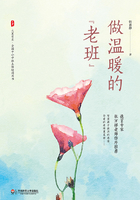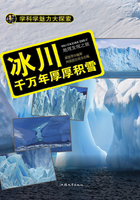Stems cylindrical, 8 to 10 in a clump, about 30 cm. high and 5 to 7.5 cm. in diameter: tubercles short, with axillary wool: radial spines 10 to 22, rigid and erect-spreading, unequal, 6 to 15 mm. long; central spinesnumerous and erect-spreading, 1 to 3 of them very stout and prominent (25 to 35 mm. long); all the spines straight, at first reddish-brown, becoming yellowish and ashy, more or less dark-tipped: flowers 2.5 cm. long, bright scarlet (almost throughout): fruit 12 mm, long, clavate and red: seeds black and pitted. (Ill. l. c. t. 6)Type in Herb. Calif. Acad.
Abundant on Magdalena and Santa Margarita Islands, western coast of Lower California.Fl. January.
Specimens examined: Lower California (Brandegee of 1889, on Magdalena Island).
The tubercles are so close together that the plant appears thickly covered with the unusually stout and erect-spreading straight spines, a few of the centrals being specially prominent. The plant is more slender than the ordinary "cylindrical" members of the genus, but stouter than the slender hooked forms of the preceding section.
26.Cactus rhodanthus (Link & Otto) Kuntze, Rev. Gen. Pl. 261(1891).
Mamillaria rhodanthaLink & Otto, Icon. t. 26 (1828-31) Mamillaria laniferaHaw. Phil. Mag. lxiii., 41 (), notSalm-Dyck (1850).
Oblong or subcylindric, 30 cm. or more high, 7.5 to 10 cm. in diameter, often forking from the middle: tubercles conical, 12 mm. long, 8 mm. in diameter, with woolly axils: radial spines 16 to 20, bristle-like, white, the lower longer (8 to 10 mm.); central spines 6 or 7, rigid, whitish with black tip, 12 mm. long: flowers rose color, 12 mm. in diameter: fruit 2.5 cm. long, cylindrical. (Ill. l. c.)Type unknown.
Referred to Mexico in general, but reported as yet from San Luis Potosi to southern Mexico.Fl. profusely all summer.
Specimens examined: San Luis Potosi (Bourgeau 47; Pringle 3679; Eschanzier of 1891): also growing in Mo. Bot. Gard. 1893.
The specimens of Bourgeau and Pringle have somewhat larger spines than the type, as indicated by the description.
27.Cactus rhodanthus sulphureospinus.
Mamillaria sulphureaForst. Handb. Cact. (1846), not Cactus sulphureus Gill, (1830).Mamillaria rhodantha sulphureaSalm, Hurt. Cact. Dyck. 11 (1850).
Central spines sulphur-yellow; otherwise like the species.Type unknown.
San Luis Potosi.
Specimens examined: San Luis Potosi (Pfeiffer, with no number or date; Eschanzier of 1891).
The varietal distinction maintained seems a small one, but it is constant and striking, so far as can be discovered.
28.Cactus capillaris.
Mamillaria laniferaSalm, Cact. Hort. Dyck. 98 (1850), not Haw. Cactus laniferusKuntze, Rev. Gen. Pl. 250 (1891).
Cylindrical and erect: tubercles crowded, conical, glaucous, with axillary bristles: radial spines capillary and very numerous, white and crisped, entirely covering the plant; central spines 4 to 6, rigid, straight and spreading, straw-colored, 8 to 12 mm. long: flowers equaling the tubercles, the yellow petals striped with red: fruit unknown.Type unknown.
Referred to Mexico in general, but definitely known only from Coahuila.
Specimens examined: Coahuila. (Palmer of 1880).
There is a confusion of synonymy between this species and C. rhodanthus, both having been named Mamillaria lanifera. The earlier M. lanifera of Haworth, however, is clearly M. rhodantha of Link & Otto; and although Prince Salm-Dyck revived the name for the present species, the law of homonyms will not permit it to stand.The name proposed refers to the abundant display of capillary radial spines, which is probably the most notable feature.
29.Cactus palmeri, sp. nov.
Cylindrical: tubercles crowded, glaucous, cylindrical (somewhat broadest above), about 4 mm. long, with dense axillary wool containing bristles: radial spines 25 to 30, very slender and white but rigid, about 5 mm. long, spreading or somewhat radiant, entangled with those of neighboring tubercles, and so covering the whole plant; central spines 3 to5 (usually 4), more robust, erect or slightly divergent, brownish with darker tip, 7 to 8 mm. long: flowers small: fruit clavate and scarlet: seedsblack and strongly pitted, 0.5 to 0.8 mm. in diameter.Type, Palmer 921 inU. S. Nat. Herb.
San Benito Island, off the west coast of lower California.
Specimens examined: Lower California, San Benito Island (Palmer 921 of 1889, reported as Mamillaria Goodrichii).
Very closely allied to C. capillaris of eastern Mexico.
30.Cactus stellatusWilld. Enum. Suppl. 30 (1813).
Cactus pusillusDC. Cat. Hort. Monsp. 184 (1813), not Haw. (1803).Mamillaria pusillaDC. Prod. iii. 459 (1828).
A very common West Indian species, apparently differing from the variety only in the very much fewer (12 to 20) radial spines, although numerous specimens, both dried and living, were examined for additional characters.This difference, however, is so constant and striking that, taken together with the wide geographical separation, it should stand as varietal.
31.Cactus stellatus texanus (Engelm.).
Mamillaria pusilla texanaEngelm. Syn. Cact. 216 (1856). Mamillaria texanaYoung, Fl. Texas, 279 (1873).
Ovate-globose, 2.5 to 3 cm. in diameter, 2.5 to 6 cm. high, proliferous and at length cespitose: tubercles 7 to 9 mm. long, the long axillary wool intermixed with several coarse twisted bristles: radial spines very numerous, in many series, the outer ones (30 to 50) capillary, white, elongated and flexuous or crisped (12 to 16 mm, long when straightened), the inner ones (10 to 12) more rigid, shorter (6 to 8 mm.), puberulent, whitish or yellowish, usually dark-tipped; central spines 5 to 8, rigid, straight, pubescent, unequal, white below and reddish or dark above: flowers 1.5 to 2 cm. long, the yellowish-white petals with reddish median band: fruit 1.5 to 2 cm. long: seeds black and shining, conspicuously pitted,1.2 mm. long. (Ill. Cact. Mex. Bound. t 5.)Type, Bigelow specimens in Herb. Mo. Bot. Gard.


